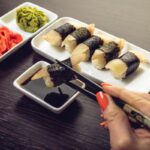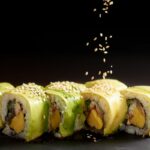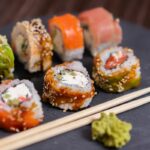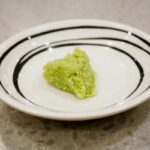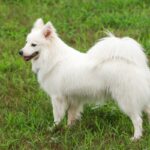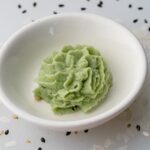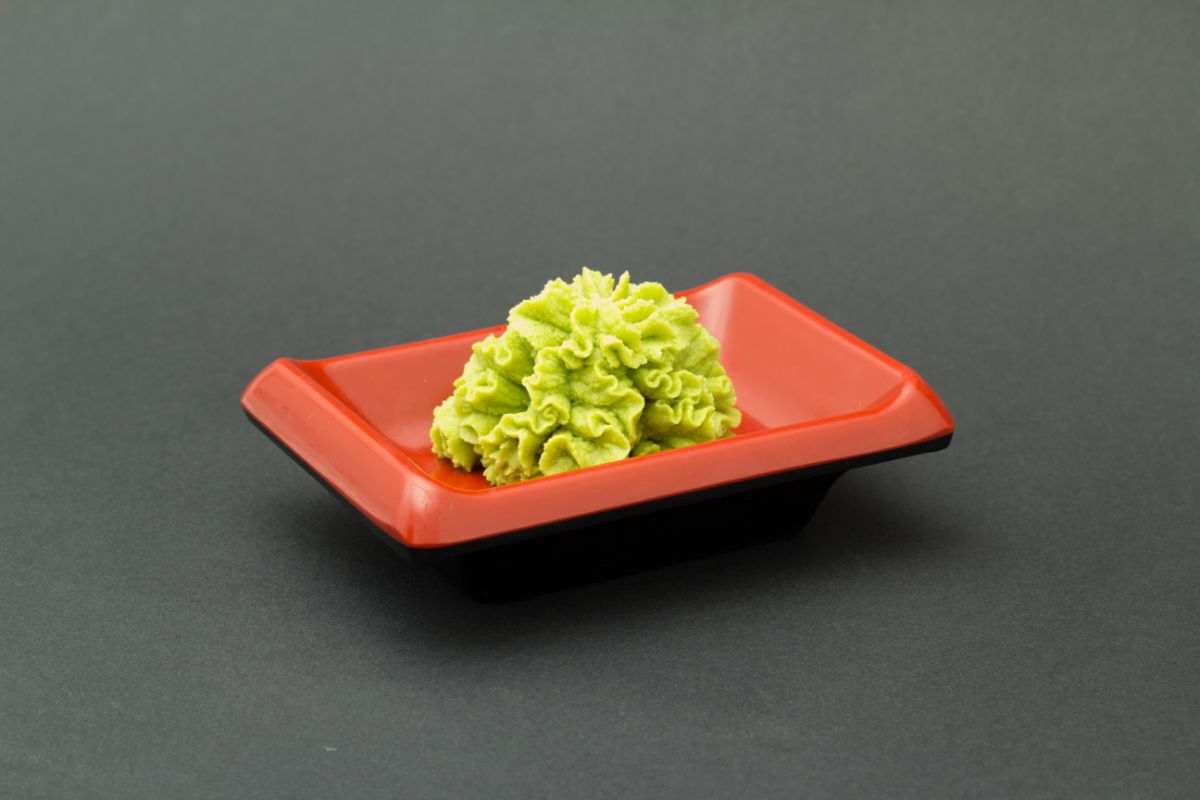You might think you are familiar with wasabi from the little dollops of green served with your sushi, or the sachet you get. It’s green and usually smooth, which is what wasabi should look like, right?
The truth is, while real wasabi should be nice and smooth and have a wonderful green color, the stuff you get at your local sushi place probably isn’t real wasabi.
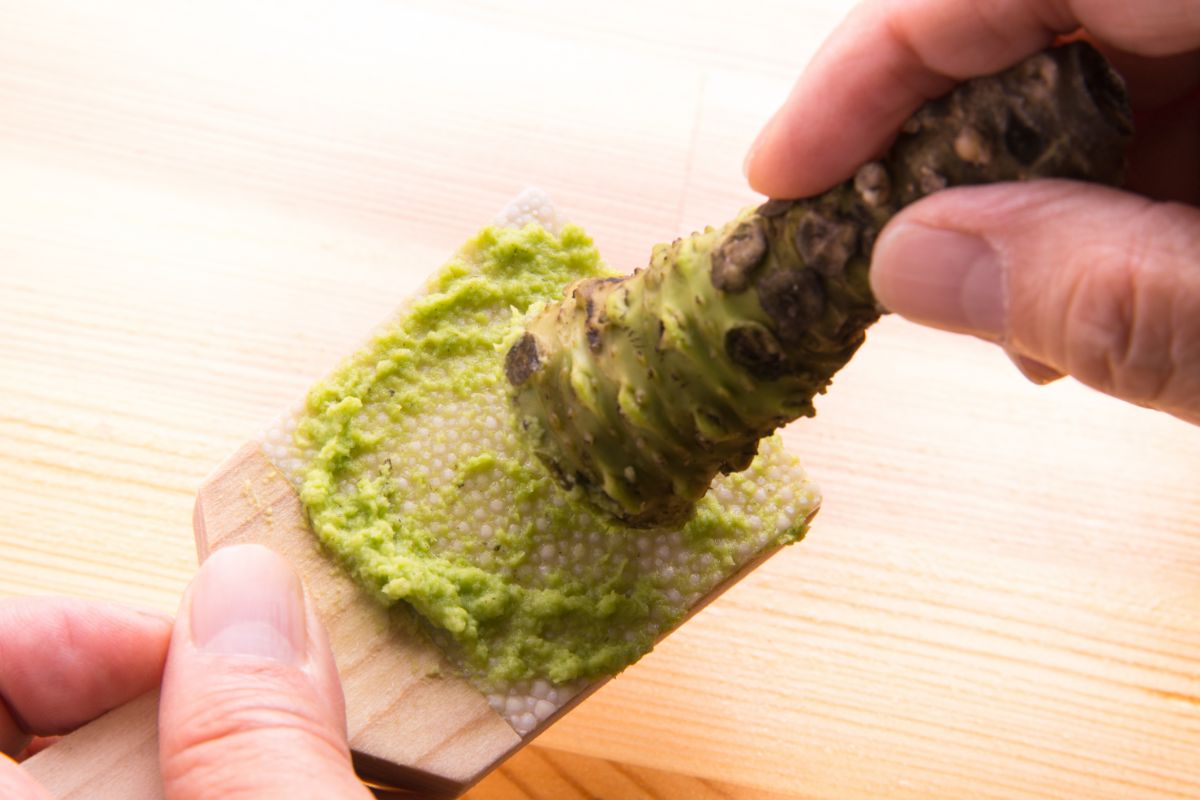
That is most likely colored horseradish or something similar to mimic wasabi. This is due to the fact that real wasabi is not easy to come by. It’s difficult to grow and produce, and it is always in high demand.
In this guide, we will look at what color real wasabi is and why it is likely you are yet to try it. We will also look at why wasabi proves difficult to grow, the appearance of true wasabi, and where you can find it.
You might learn how to differentiate between the real and the fake just by looking at it!
What Color Is Real Wasabi?
Wasabi, also called Japanese horseradish, is naturally light green. However, it does share some similarities in taste to the horseradish you may be familiar with.
In fact, the Japanese term for horseradish is seiyō wasabi, also known as “western wasabi”. If you want to get true (Japanese) wasabi in the United States, you will likely find it in a specialty Asian grocer or a high-end restaurant.
You can tell if it’s natural wasabi, as it should be that classic green. However, it’s not as easy as that, since there are fake versions out there, too. One common substitute for wasabi is a combination of horseradish, starch, and mustard.
This gives the mixture the green coloring you would expect, though spinach powder can also be used to achieve the color.
Make sure that you check the list of ingredients if you want to get your hands on the real stuff. Real wasabi should be pure wasabi, with one or two added ingredients at most.
The Likelihood That You Are Yet To Try True Wasabi
There’s a good chance that the “wasabi” you have tried before is not even real wasabi at all. You might have come across this at your local sushi place or a restaurant.
This “wasabi” you get typically packs a punch and overpowers anything else you put in your mouth, right?
Well, real wasabi should not do this. In fact, the bold flavors you might be used to do not accurately represent real wasabi at all. True wasabi does have a kick to it, but the flavor is not overpowering.
This allows you to still enjoy the subtle flavors of the food you are enjoying along with it.
Don’t be fooled, though – the vapors from real wasabi will be enough to clear your sinuses in no time!
Research by The Washington Post indicates that 99% of the wasabi sold in the US is not wasabi at all. It’s a similar tale in Japan, with as much as 95% of the wasabi sold there being fake, too.
It may be the same color as wasabi and taste like it, too, but it’s not the real thing.
This is simply because the fake wasabi is so much easier to produce, and the real stuff is incredibly expensive.
However, restaurants tend to do a pretty good job of imitating the real thing, even down to the seemingly freshly grated appearance! However, they only achieve this look by using cornstarch and chemical stabilizers.
Why Wasabi Proves Difficult To Grow
The overriding reason why you are yet to try true wasabi is that the plant it comes from is so rare. Wasabia japonica (Japanese wasabi) is an aquatic plant that has been proven to be difficult to grow.
This is actually one of the primary reasons why you would know you have real wasabi in the first place – the price. True wasabi will be among the most expensive of all the condiments you can get your hands on.
Wasabi has been called the most difficult plant to grow, with good reason, too. A small mistake can be incredibly costly for a wasabi farmer.
The seeds, which cost around a dollar each, often don’t germinate due to their picky nature. Not only that, but the plants are known to wither quickly and die if they don’t get everything they need.
Should the seeds germinate, they have to get past stem rot and fungal diseases, which are common with plants that are cultivated in wet conditions. Even getting past that, it can take a total of three years for the wasabi plant to fully mature.
All those risks and time taken add up to an incredibly difficult plant to grow, making true wasabi highly sought after and expensive.
The Appearance Of True Wasabi
True wasabi should be naturally green and is produced by grating the green-colored stem (rhizome) of a wasabia japonica plant. Granted, the root does look like that of horseradish, only colored green, and the two taste similar.
However, wasabi should have a more complex flavor profile. Despite this difference, the “western horseradish” works well as a substitute since the plants are part of the same family (brassica). This is the same family that mustard belongs to!
Where You Can Find True Wasabi
Aside from in an Asian specialty grocery store, you can find true wasabi growing on rocky river beds and by cold mountain streams in Japan. Wasabi first became known when it was mentioned in the Honzo Wamyo which is a medical dictionary written back in 918 AD.
The wasabia japonica plant could have been used for medicinal purposes yet in the Edo period during the 1800s, it became a seasoning to be added to sushi.
While wasabi has its home in Japan, it has started to be grown in other Asian countries as well as in the UK, North America, and New Zealand.
Final Thoughts
If you are lucky enough to find real wasabi, then it can prove quite different to what you may have thought was wasabi. It will still be green, as it should be, but the coloring won’t come from spinach powder or food coloring.
The taste should also be different as it will still be spicy but have more complex elements. To fully enjoy wasabi in its true form, try a portion of wasabi zuke to see how the stem tastes compared to the leaves, groundstalks, and flowers of the plant.
Frequently Asked Questions
You should expect wasabi to have a pungent, formidable taste as it belongs to the same family as horseradish and mustard.
It should clear your nasal passages, but true wasabi should have a more complex flavor profile.
Your palate may perceive fake wasabi as spicier simply because it has more allyl isothiocyanate which is an enzyme that creates the sensation of heat.
True wasabi should still be spicy but not as hot or pungent but increasingly sweet, fragrant, fatty, and even pickle-like.
True wasabi comes from the stem of the wasabia japonica plant, but you can also eat the leaves. The plant should grow to about two feet tall and have stems that grow above the ground.
Those leaves are typically heart-shaped and can be as big as a dinner plate. Their taste should still be spicy but can taste like spinach once cooked, so use it in stir-fries or salad if you can find it.
If you want to cook with the entire wasabi plant, then you can create a pickled dish known as wasabi zuke.
This is especially popular in the Shizuoka Prefecture and involves the leaves, flowers, stems, and groundstalks of the plant being chopped up.
These components are then pickled in salt, sugar, and a byproduct of sake production known as sake lees.
- 16 Best Websites To Watch Japanese Movies With English Subtitles - May 11, 2023
- Is ZIPAIR The Best Airline For Traveling To Japan? - May 11, 2023
- Ryu Murakami Vs Haruki Murakami – Which One Should You Read? - May 11, 2023

